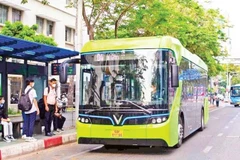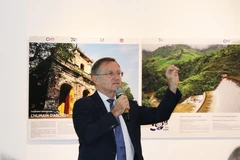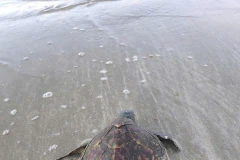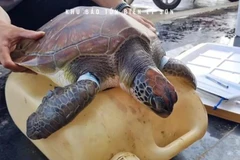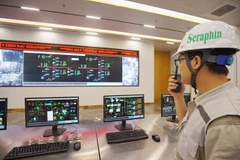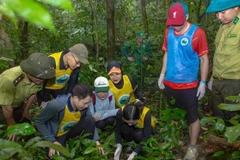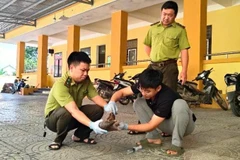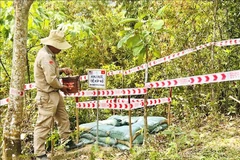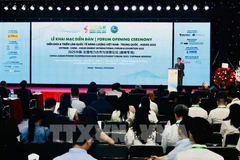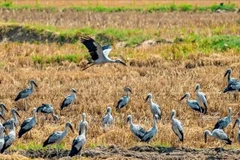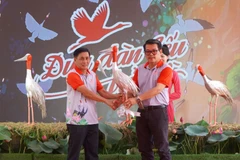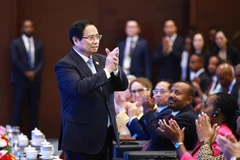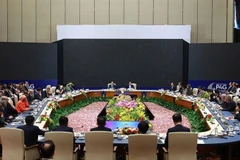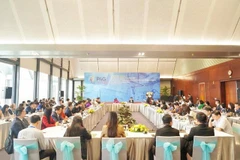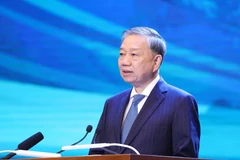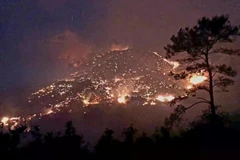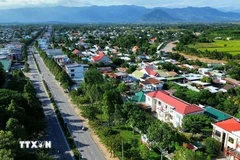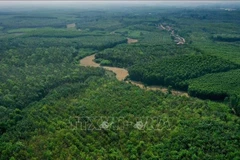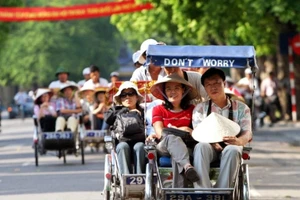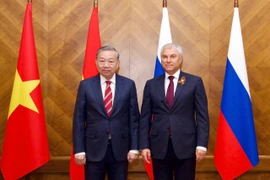 Ground is broken for HCM City’s second waste-to-energy plant in Cu Chi District on October 16. (Source: VNA)
Ground is broken for HCM City’s second waste-to-energy plant in Cu Chi District on October 16. (Source: VNA) HCM City (VNA) – The Tam Sinh Nghia Investment Development JSC onOctober 16 kicked off construction on a waste-to-energy plant with a dailycapacity of 2,000 tonnes of waste at the Tay Bac Solid Waste Treatment Complex inCu Chi district, Ho Chi Minh City.
To be built at a cost of 5 trillion VND (216.58 million USD), the plant, thesecond of its kind in Ho Chi Minh City, will generate 40 MW of electricityannually.
According to the company’s General DirectorNgo Xuan Tiec, the plant will use German Martin Grade technology which is nowavailable in 40 countries worldwide to generate electricity and producerecyclable by-products.
“This advanced technology helps reduce the volume of buried waste, reusetreated wastewater and effectively control odours.”
Thefirst phase of the project is being built on an 8ha area in the 20ha facilityrun by the Tam Sinh Nghia Investment Development JSC.
Construction will take 18 months,and the plant will begin operation after a four-month trial period.
The plant’s second phase will be built on the remaining 12ha and it wouldincrease the processing capacity to 3,000 tonnes of waste per day, he said.
Speaking at the groundbreaking ceremony, Chairman of the municipal People’s Committee NguyenThanh Phong, praised the company for acquiring the technology, saying the cityis taking various measures to treat daily waste by modern technology to ensureenvironmental hygiene and make the best use of natural resources.
The city generates around 9,000tonnes of solid waste daily, of which more than 72 percent is buried and therest is burnt, recycled or used to produce fertilisers.
It aims to process 50 percent of thewaste to produce electricity by next year.
“I hope waste treatment companiesjoin hands with the city to achieve the target,” he said.
The People’s Committee approved theconstruction of three plants to generate electricity from waste using advancedtechnologies in August.
On August 28, constructionon the first plant began at the Tay Bac Solid Waste TreatmentComplex in Cu Chi. The 400 million USD plant is being built by Vietstar JSC,and in the first phase can process 2,000 tonnes per day.
Tasco Joint Stock Company is expected to begin construction of the third plantby the end of this year./.

